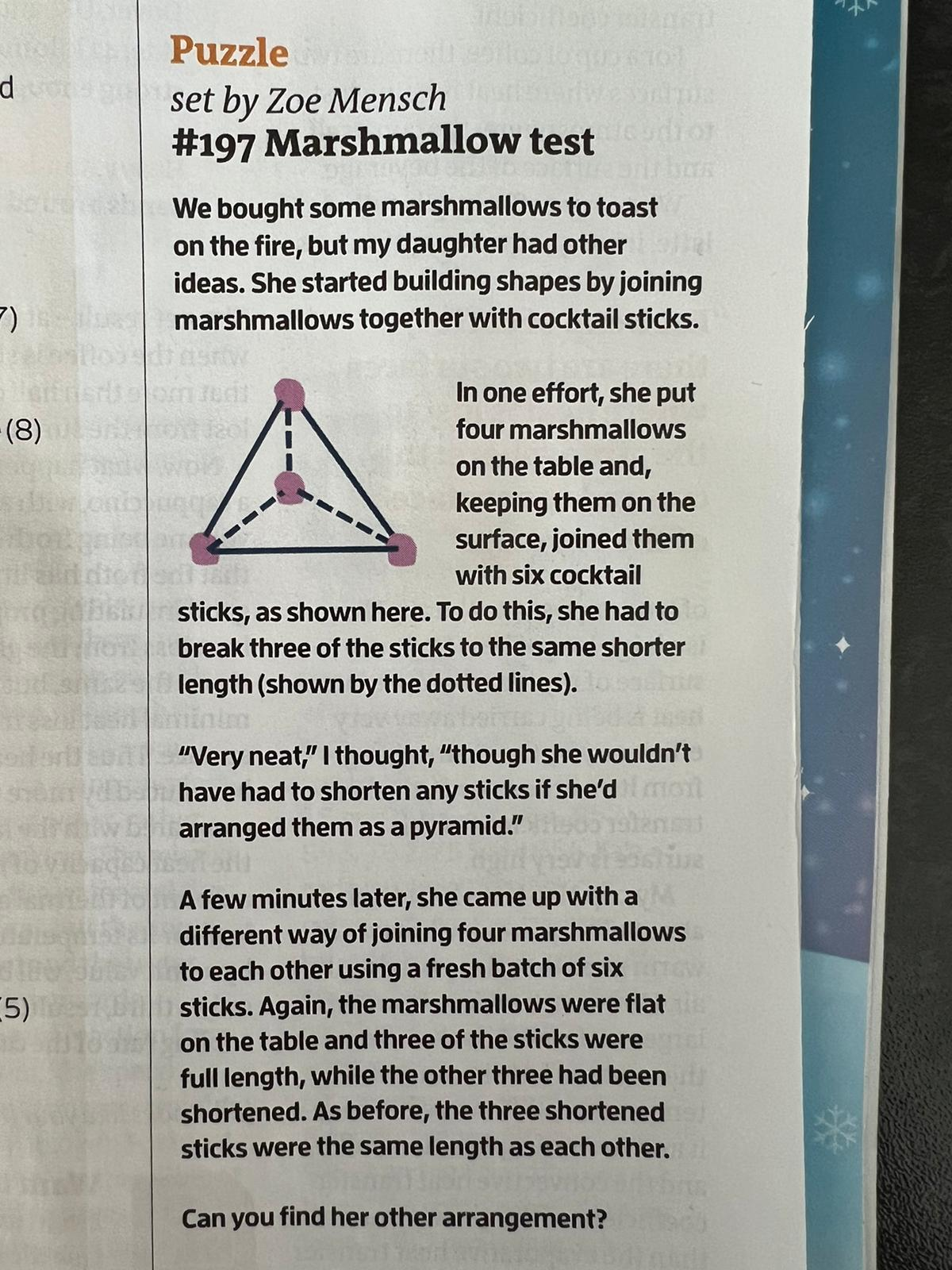Marshmallow test puzzle
My friend Selvan sent me this puzzle:

Feel free to give it a try before revealing my thought process and solution! Also, in case you're wondering, the sticks do have to have marshmallows on both ends, and they're straight, and marshmallows can't be in the same position or at infinity. Also, the sticks can cross (this doesn't violate the "2D" requirement). None of this was obvious to me!
My solution
At first, I looked at this as a graph. The graph is undirected and the vertices unlabelled. There are two possible edge weights, and the graph is not allowed to violate the triangle inequality. Intuitively, whenever edge weights are involved, I think of force-directed graphs (like a spring system with different length springs) that relax into a configuration where there's no tension in the springs.
Anyway, if you think about it as a graph, you'll realise that topologically, the first configuration is exactly the same as a square with an X in it. In fact, it's not possible for any other configuration to exist, as a graph with 4 vertices and 6 edges is completely connected. This means that we can't play around with topology, only the edge weights (or rather, move the vertices around, if you think of it that way).
There is no alternative layout where a fourth vertex is inside a triangle like the example, so the vertices *must* be in a quadrilateral layout. If you then build a trapezium using three long sticks and one short stick, you'll quickly see that there's a layout at which the shorter ones are all the same length. I made a visualisation to help illustrate this:
Afterwards, Selvan prompted me to realise that the distance between the bottom left corner and the point of intersection in the middle of the X should be the same as the red line distance, answering at which point exactly the vertices along the red lines are equidistant from each other!